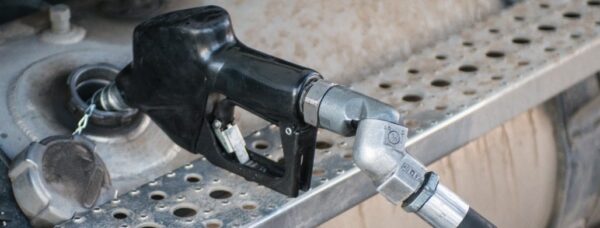What could you do with $1,080 extra per year, per truck in your fleet? You could be saving this much or more just by using the right discount fuel card. With so many fuel card options available, it can be hard to know how to choose the right one. In this blog, we’ll explain the difference between a discount fuel card and a credit card, and share the top features to compare when you’re shopping for savings.
Choosing the Right Card Type
Credit Cards
Many fleet owners buy fuel with credit cards because they’re quick, convenient, and they’re accepted everywhere. But no matter where your drivers are fueling up, if they’re using a credit card, you’re overpaying. The diesel price posted at truck stops is actually the cash price. When you pay by credit card, the cost is usually five cents more per gallon, or higher. Multiply that by 1,500 gallons per month (a typical amount of fuel consumed by an average tractor-trailer), and it comes out to $90.00 per month, or $1,080 per year. Even worse, if you don’t pay off your credit card each month, you’ll pay interest fees, too.
Discount Fuel Cards
Unlike credit cards, discount fuel cards are cash-based, so they qualify for the lower cash price posted at the pump. But that’s not the only way discount fuel cards help you save money. You’ll also get discounted pricing negotiated by the card provider, beyond the cash price. When multiplied by the gallon, and by the truck, these discounts add up to huge savings.
Comparing Fuel Card Benefits:
Discount fuel cards offer much more than savings, and not all cards are created equal. Here are some of the top benefits (and drawbacks) to look for when comparing providers:
Rebates
Fuel is one of biggest expenses in operating a fleet, accounting for up to a third of business costs. Ask your card provider how many cents per gallon you’ll save when you use their card, and find out whether you must meet a certain fuel threshold to qualify.
Reporting Features
Many fuel discount cards provide detailed reporting tools to analyze spending and assist with fuel tax reporting. The level of detail provided depends on the card, so be sure to ask what you’re getting. For example, can you track mileage and expenses per vehicle, and per driver?
Control Features
If you want to ensure your team is using cards appropriately, ask about control features. You may wish to limit purchase types, amounts, or the number of times a card is used daily.
Card Acceptance
Some fuel cards are limited to certain geographic areas, or specific fuel providers. Be sure the card you choose will be convenient for you and your fleet to use.
Cash Advance Capabilities
Can you use the card to withdraw cash from an ATM, transfer money, and make balance inquiries? Cash advance capabilities can be an attractive feature in fuel cards, but not all providers offer them. If yours does you should beware, most of the capabilities come with a transaction fee that can also add up overtime.
Service
The people behind the card can be as important as the benefits provided. Find out if there is a 24-hour line for customer support, and try calling. It can be helpful to know whether a live person answers, and how long it takes to get through.
Trust
This is your money we’re talking about, so make sure you’re dealing with a provider you trust.
How is the company rated by the BBB? Are they financially sound? Do they have a good reputation? Do you trust them? Interview each card provider, and ask for referrals.
It pays to shop around, so be sure to do your homework. If you decide a fuel card is right for your fleet, you may want to consider Triumph, formerly known as Triumph Business Capital’s discount fuel card program, which is accepted at over 11,000 locations nationwide. Contact our sales team, for more information.
